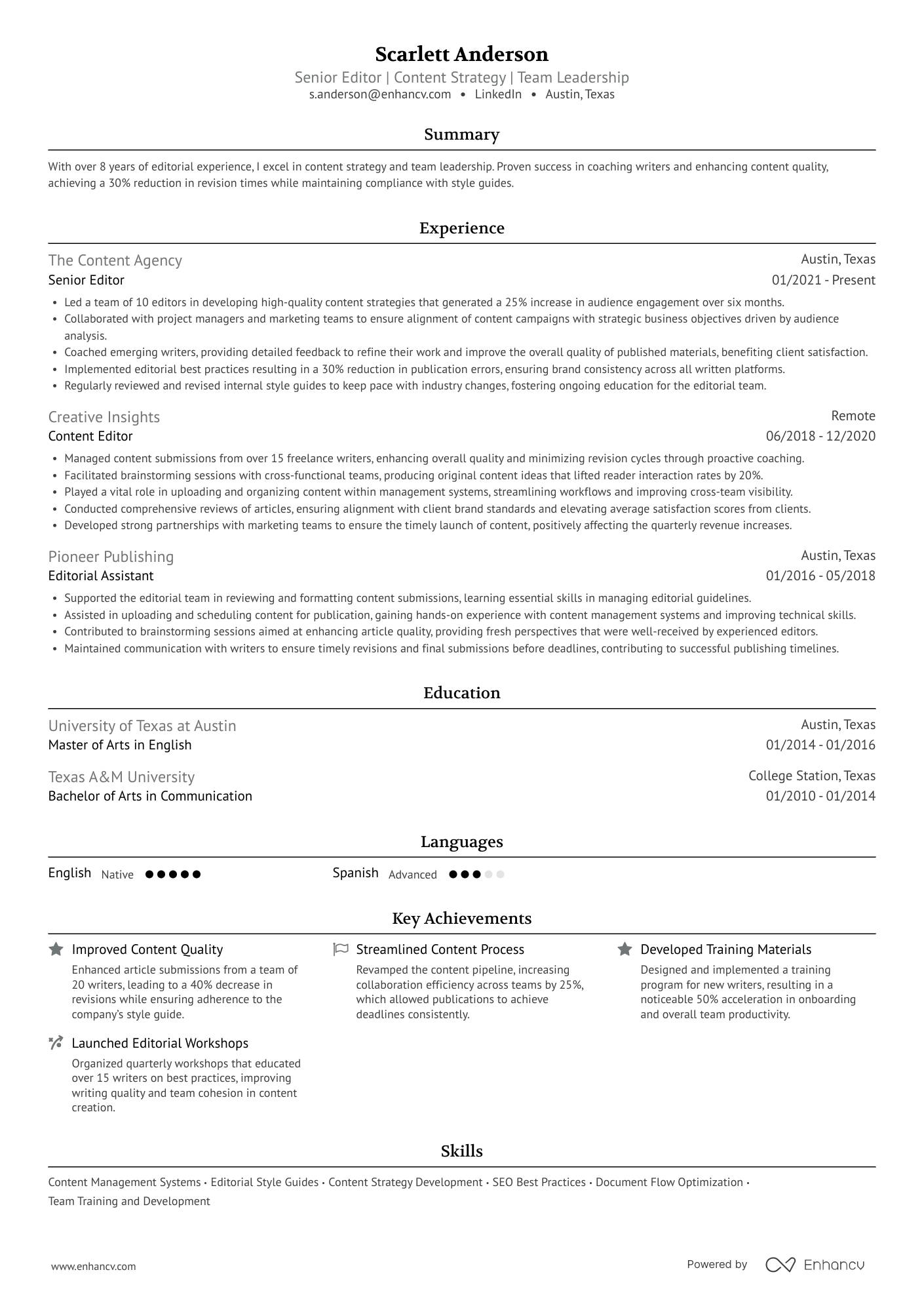Your name carries weight. It can open doors to your dream job, and mentioning it to someone else can even help them land theirs. That’s why we recommend using your name every chance you get—and yes, on your application documents, too!
How you name your resume is a detail often overlooked in the job search process, yet it’s often the very first thing a hiring manager sees. It’s like a handshake before the conversation even begins.
In this article, we’ll explore why naming your resume file thoughtfully can make a big difference in how you’re perceived—and how to get it right.
Key takeaways
- Your resume title is your first impression—make it professional and clear.
- Always include your first and last name. Аdd the role if helpful.
- Avoid vague or generic names like “resume.pdf” or “final_resume.pdf.”
- Use PDF unless otherwise specified to preserve formatting.
- Keep a consistent file name that matches your resume header, especially if using a nickname.
- Proofread, tailor, and follow instructions in the job description for a standout application.
By the way, the Enhancv Resume Builder automatically names your file using your first and last name and the word resume, upon download.
Why your resume file name matters
You might be thinking, “How I name my file isn’t such a big deal. The content of my resume is more important.”
Eek! Of course, your content is the most important thing—but think of your file name as the gateway to your excellent resume. It should invite the reader in, not shoo them away.
Let’s see why:
#1. It’s the first impression you give to the hiring manager
Especially if you’re applying through an online application form rather than by email, the recruiter may not have seen anything else from you until they open your application. A vague or unclear file name might even deter them from opening the document, as its contents would be uncertain. Worse, they might assume it’s a scam or a virus.
#2. A proper file name exudes professionalism and clarity
Just like a dedicated work email is more professional than using your old high school handle, a well-named resume file makes it obvious who you are from the start.
#3. It helps with recruiter organization
Including the job title in your resume file name—especially in companies with multiple open positions—makes it easier for recruiters to match your resume to the right job at a glance.
While an ATS (applicant tracking system) usually scans the content of your resume rather than the name itself. However, a clear, relevant file name for your resume helps humans stay organized and avoid confusion.
How to name your resume file for maximum impact
Now let’s get to the real deal. What should you name your resume file for best results?
Include your first and last name
Your name is your personal brand. Including it in your resume file name ensures the recruiter knows who the document belongs to right away, making it easier to identify in their system.
Add the job title or position (optional but helpful)
If the company has multiple openings or you’re applying for a specialized role, adding the job title helps recruiters quickly connect your resume to the right position.
For small companies or when the role is obvious from your application, you can keep it simple—just your first and last name works fine.
Adding the role is usually helpful, but not always necessary. Choose what feels right for your situation: FirstNameLastNameJobTitle.pdf or just FirstNameLastNameResume.pdf.
Use the word “resume”
Clearly identifying what the file is will save recruiters some time. It also helps both you and them distinguish your resume from other attachments, like a cover letter or references.
Follow the instructions in the job description
Last but not least, you need to follow any instructions in the job description.
Sometimes it’s required to include the position title or an identification number in the resume’s file name.
You might also be required to use a certain format. We recommend you use PDF whenever possible—it preserves formatting and looks the same on any device. Only use Word (DOCX) if a job posting specifically asks for it.
What if I want to use my nickname or a preferred name?
If you commonly go by a preferred name or nickname in your professional life, it’s fine to use it in your resume title—as long as it matches what’s on your resume header. For example, if your resume says “Jake Smith” rather than “Jacob Smith,” name your file “JakeSmith_Resume.pdf.”
However, if your nickname is too uncommon or very different from your legal name, it’s safer to stick with the latter. This helps avoid confusion or mismatches during background checks and ensures HR systems easily process your application.
Examples of a good resume file name
Here are some examples you can copy and paste directly, by just replacing your name, and/or role.
JohnDoe_Resume.pdf
JaneSmith_ProductManager_Resume.pdf
AlexBrown_SoftwareEngineer.pdf
Common mistakes when naming your resume file
Now that we know what works, let’s look at what doesn’t.
Here are some naming mistakes to avoid:
Avoid vague names
“Resume.pdf” leaves the recruiter guessing whose resume it is—and makes it easy for your application to get lost in a sea of files.
Don’t use generic names
“Final_resume.pdf” or “new_resume.doc” add no value and can make it hard for recruiters to match your resume to you.
Skip unclear references
“Dogwalker_resume.pdf” sounds unprofessional and distracts from the serious business of landing you a job.
Follow the netiquette
As per the good ol’ internet rules, all caps can be perceived as yelling. Special characters or overuse of spaces is also not recommended. If you want to distinguish the words in your file, just use Title Case, like so: JohnSmithResumeFinancialSpecialist.pdf.
Additional tips and tricks
Here are some more tricks you can use when creating that perfect application.
Use a unified look for all your application documents
By creating a unified look for all your application documents—resume, cover letter, portfolio—you reinstate the sense of your personal brand and elevate your chances for an interview.
Proofread your resume
Before sending out your resume, you should absolutely take the time to proofread it all. Any grammar, spelling, or punctuation mistakes can lower your chances significantly.
Tailor your resume for each role
If you’re applying for different roles, tweak your resume for each one so it targets the job description. Keep a master resume handy to update and tailor as needed.
Conclusion
Naming your resume file might seem like a small detail, but it’s the first interaction with your future employer.
A thoughtful, professional resume title can set the tone, show your attention to detail, and make it easier for recruiters to find your resume in a sea of applicants. Take the time to get it right—it could be the difference between getting lost in the pile or landing that interview.
Make one that's truly you.




